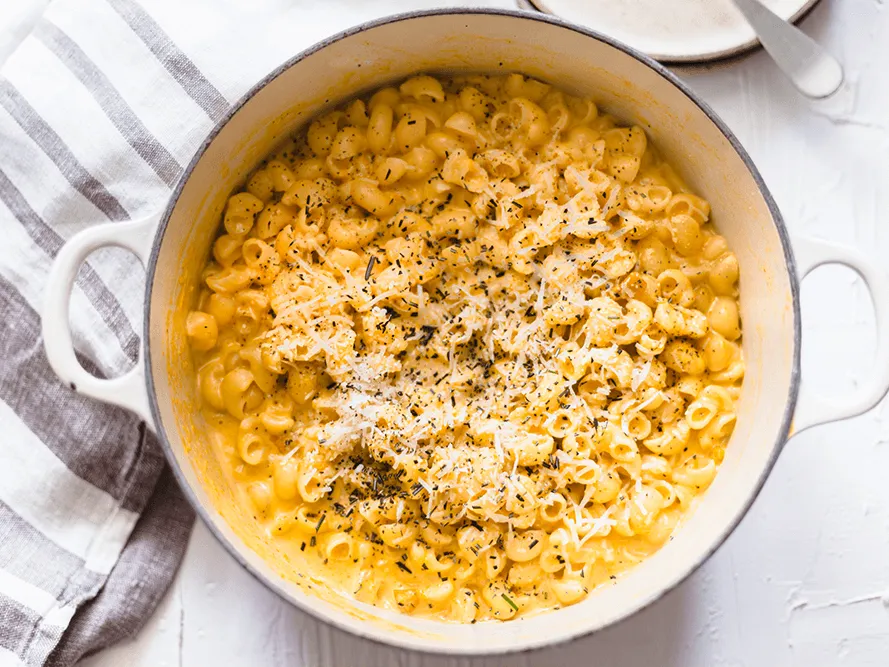Serves = 4
- 500g pumpkin (butternut works best)
- 250g (1punnet) cherry tomatoes
- 100g cottage cheese
- 50g lite tasty shredded cheese
- ½ cup of cashews (raw)
- 1 tbsp (7g) smoked paprika
- 250g macaroni pasta
- 1 tsp extra virgin olive oil
Finally, a mac n’ cheese that your body will thank you for!

Fun tips about this recipe:
Cottage cheese has a very low fat content, making this an excellent source of protein for vegetarians. Replacing cheese with pumpkin is also an easy way to include more veg in your day, and makes this recipe a low kilojoule alternative to the traditional; mac n’ cheese.
Nutrition information (per serve):